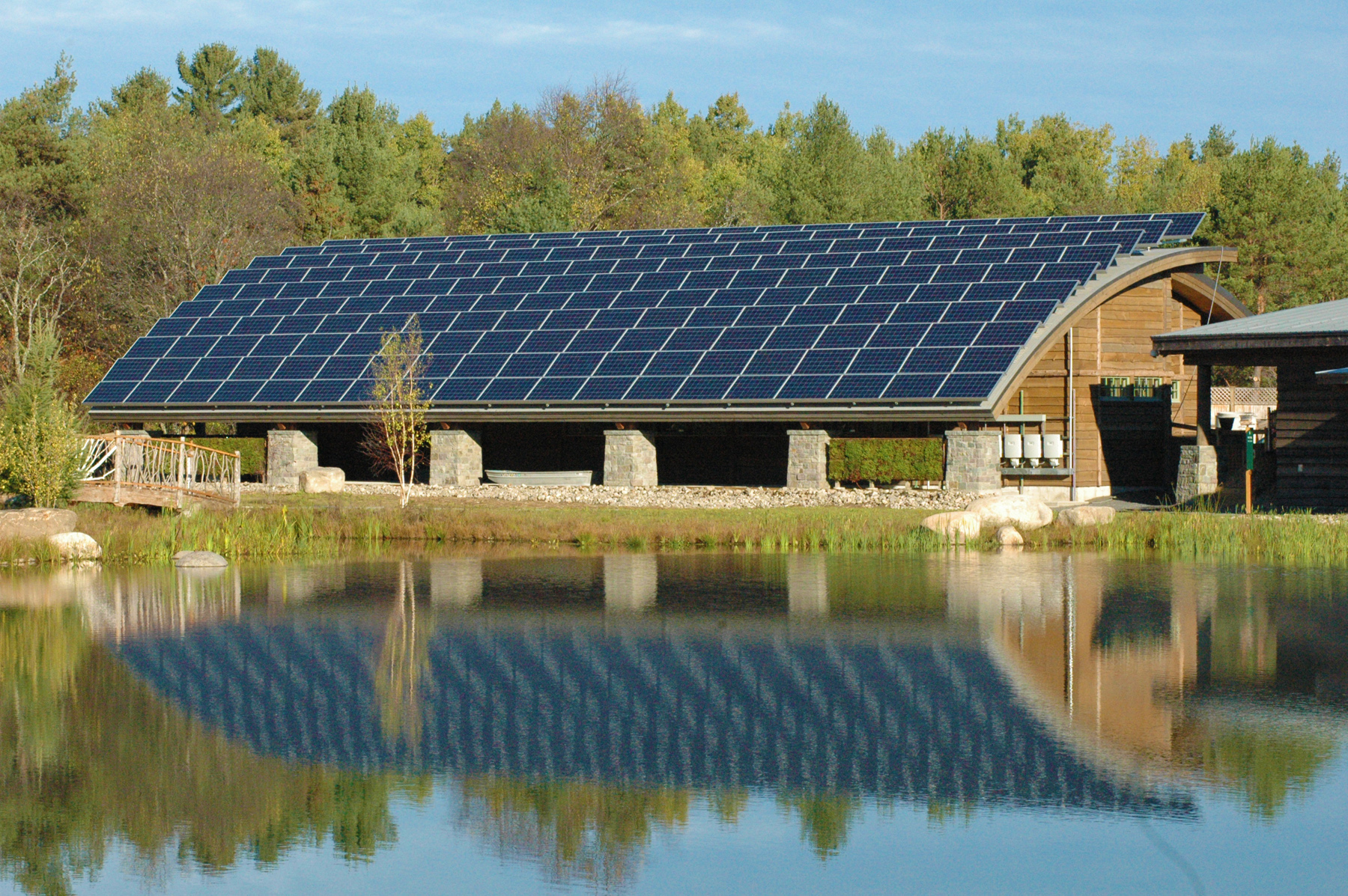
Phinney Design Group, a multi-disciplinary
architecture and interior design firm based in
Saratoga Springs, was presented in April with
the Adirondack Park Excellence in Design award
for the design of the Bio Building at The Wild
Center/Natural History Museum of the Adirondacks
in Tupper Lake.
“It is an honor that the Bio Building is being
recognized for its innovative design, green
technologies, and fit into the landscape,” said
Michael Phinney, principal architect of Phinney
Design Group. “We are happy to be a part of the
team that made the project a reality.”
“Phinney Design Group embraced our goals of building as green as possible and offered additional green solutions that we had not thought about–none of these suggested additions increased the overall cost,” said Stephanie Ratcliffe, executive director of The Wild Center.
“In addition to being the architect for the project and helping us get our building open, they have continued to be an advocate for our cause, and we are thrilled that they have received this award in recognition of the innovative design features,” said Radcliffe. “The dramatic curved green roof on the Bio Building is one of my favorite features on our campus. It welcomes visitors as they drive in and we hope helps open up new creative thinking about green building.”
The Adirondack Park Excellence in Design award competition is intended to showcase examples of buildings in the Adirondack Park that enhance the sustainability and livability of park communities and contribute to distinctive, attractive neighborhoods with a strong sense of place.
The Natural History Museum, also known as “The Wild Center,” is a celebration of the wildlife and community of the Adirondacks, featuring live exhibits such as otters in their own waterfall and trout that swim over visitors’ heads. The museum is highly interactive, encouraging visitors to truly experience the animals, plants, and ecology of the Adirondack region.
The Bio Building is an administrative support building that houses the maintenance fleet, environmentalist’s offices, and quarantine areas.
In keeping with the holistic approach to the museum program, the Bio Building was designed to take advantage of the surrounding environs in its overall design and placement. Photovoltaic panels turn sunlight into electrical energy, green roof materials buffer rainwater runoff, and replace displaced habitat, natural materials from local sources were used to frame and finish the structure. Low and no VOC materials create the interior environment and highly efficient energy delivery systems minimize the building’s carbon footprint.
The museum complex is designed to fit into the fabric of the existing community by using locally available materials and elements of an indigenous Adirondacks style. The land, donated by Tupper Lake school district voters, had previously consisted of an open cut sand quarry, enabling the team to minimize disturbance of the existing natural habitat.
The awards ceremony was held at the Crowne Plaza in Lake Placid.
More information on Phinney Design can be found at www.phinneydesign.com. To schedule an appointment with Michael Phinney, contact Margaret Nupp at 587-7120 x 10.
Photo Courtesy of Phinney Design Group
